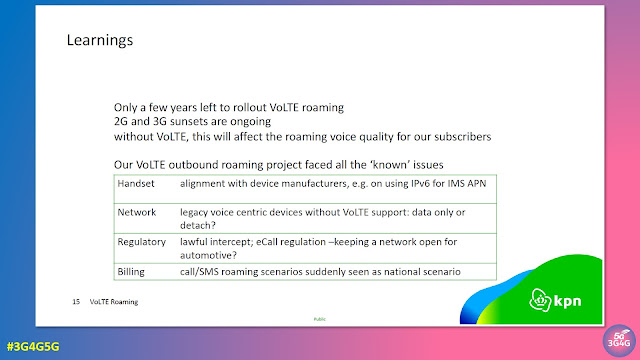The current 600 MHz 5G band (n71) is getting an extension as 3GPP approves plan for APT 600 MHz band. Back in April, the 29th meeting of the APT Wireless Group (AWG-29) organized by the Asia Pacific Telecommunity (APT) concluded with the final approval of the new APT 600 MHz band plan that hoped to open an additional 40+40 MHz prime UHF spectrum. A similar approach back in 2013 resulted in the 45+45 MHz in the 700 MHz band, known in 3GPP as n28.
3GPP TSG RAN 96 (all docs here) approved a new work item to standardize the APT 600 MHz band plan which was initially proposed by the ITU-APT Foundation of India (IAFI).
RP-221778 (revision of RP-221062), provides a detailed justification for this new band. Quoting from the document:
The 470-694 MHz frequency range is allocated to the broadcasting service and mobile service on a co-primary basis in ITU Region 3. The frequency band 470-698 MHz, or parts thereof, was identified by WRC-15 in 7 countries in Region 3 through new footnote No. 5.296A for use by those administrations as listed wishing to implement terrestrial IMT systems. In addition, there is interest from other significant markets to do the same. Elsewhere, USA, Mexico and several other countries in ITU Region 2 also identified this band for IMT through footnotes 5.295 and 5.308A. It is noted that resolves 2 of revised Resolution 224 (Rev.WRC-19) to encourage administrations to take into account results of the existing relevant ITU Radio communication Sector studies, when implementing IMT applications/systems in the frequency bands 694-862 MHz in Region 1, in the frequency band 470-806 MHz in Region 2, in the frequency band 790-862 MHz in Region 3, in the frequency band 470-698 MHz, or portions thereof, for those administrations mentioned in No. 5.296A, and in the frequency band 698 790 MHz, or portions thereof, for those administrations mentioned in No. 5.313A.
Spectrum below 1 GHz is expectedly well suited for mobile broadband applications. In particular, the unique propagation characteristics of the bands below 1 GHz allow for wider area coverage, which in turn requires fewer infrastructures and facilitates service delivery to rural or sparsely populated areas. In this regard, the 700MHz ecosystem is growing swiftly: there are over 34 commercial networks deployments. The APT700 band plan coming out from Region 3 played a huge role in its success globally. Outside of APAC, countries in Region 2 have adopted or plan to adopt the APT700 band plan (3GPP band 28) for LTE system deployments. The lower duplexer of APT700 plan has also been adopted for Region 1 since the conclusion of WRC-15.
As the utilisation of the 700MHz spectrum increases over time, it is desirable to look at additional spectrum that could be considered as a companion besides 3GPP Band 28. Therefore, the use of parts of the 600MHz band for the mobile broadband service would provide a vital means of delivering high quality, wide area broadband services including in rural areas and deep inside buildings. The timely availability of frequency arrangements is essential for the development of IMT specifications and standards and the early consideration by Administrations in the footnotes referred to above of suitable frequency arrangements.
The APT region is very diverse and consists of highly developed and developing countries and some with extremely large and rural population base. The sub 1 GHz bands is well suited for the later.
During the last year or so, 3GPP RAN 4 has completed a study item on the feasibility of various duplex filter options for use in this band. The results of this study are documented in TR 38.860. This study was sent to the AWG in an LS RP-212629 in Sep 2021 with a request to provide guidance on a preferred band plan and information on regulatory aspects for the normative work to begin. The AWG 28 meeting has considered the request of the 3GPP and has provided a response to this LS. In this response the LS has indicated a preference for option B1 (full band) and has also requested for the work to begin immediately with a view to completion by Dec 2022. Additionally, the answers to the regulatory questions sought by the 3GPP have now been provided via a reply LS RP 221045.
The band plan for the option B1 that has a single duplexer or full band- is shown in Table 1 below.
The Tx-Rx is "reverse-duplex"; in other words, the downlink frequency band is below the duplex gap while the uplink frequency band is above the duplex gap. This arrangement is opposite to conventional notation; however, for this band, it provides the benefit of aligning the uplink band adjacent to 3GPP band 28 thereby minimizing interference conditions at the 703 MHz boundary.
Accordingly, the companies listed here request 3GPP to start normative work on the following option.
- Option B1 with a single duplexer
For anyone interested in studying this further might want to refer to 3GPP TR 38.860: Study on Extended 600 MHz NR band.
Related Posts:
- The 3G4G Blog: LTE Band 13 mystery
- The 3G4G Blog - Radio Design Webinar: Optimising Your 700 MHz Deployments
- The 3G4G Blog: Minimum Bandwidth Requirement for 5G Non-Standalone (NSA) Deployment
- Operator Watch Blog: USA has an interesting mix of different types of 5G
- 3G4G: 50 Questions on Spectrum


















